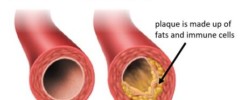Telomeres are repeated DNA sequences at the end of all of our chromosomes that protect our genes from degradation; kind of like the aglets on the end of shoelaces. Every time our cells divide the telomeres get shorter and eventually they disappear and then that cell can’t divide anymore, this is why our cells age and why we age. If telomeres shorten faster then our cells age faster. We have some control over this though.
When telomeres become progressively shorter there are a few different things that can happen to the cell
- Apoptosis – this is a natural normal process of cell death, the body replaces old cells all the time, it is beneficial to get rid of old cells.
- Senescence – this is when the cell stops dividing but doesn’t die. It usually has limited normal functions.
- Oncogenic transformation – this is when a cell becomes a cancer cell; it has mutations and does not function normally but also doesn’t die. Cancer cells form in other ways as well, this is just one possible process. Cancerous cells then start to produce an enzyme called telomerase that prevents further shortening and basically makes cancer cells immortal. When telomeres are too short, the genome becomes unstable and mutations in the DNA can occur at faster rates; DNA mutations lead to cancer.
The RATE of telomere shortening can be affected by the following factors:
- Smoking – introduces large number of toxins to the body that impact DNA in any location including the telomeres and can lead to oncogenic transformation. In healthy people, telomeres shorten by approximately 25 nucelotide bases per year. In smokers, that rate increases to approximately 30 bases per year. If a person smoked for 40 years, that would equal 7.4 years less lifespan. Smoking also increases oxidative damage, which is the production of free radicals that damage DNA including telomeres.
- Obesity – also associated with oxidative damage and inflammation. A waist circumference higher than 35 inches in females and 40 inches in males is significantly associated with biomarkers of DNA damage and elevated urinary levels of reactive oxygen molecules. Obese people have reduced ability to produce antioxidant molecules that reduce free radicals.
- Pollution – people that work in environments with exposure to harmful agents have increased oxidative stress and DNA damage that affects telomeres.
- Stress – stress hormones, like cortisol and other glucocorticoids, are correlated with a reduction in the ability of cells to produce antioxidants, therefore increases DNA damage that also affects telomeres. Several studies show that people that have high levels of ongoing daily stress have shorter telomeres than control groups of people that are the same age. Chronic stress reduces lifespan.
- Exercise – Exercise is actually an acute short term stress on the body. Because of the increase in metabolism, exercise actually increases the production of free radicals and reactive oxygen molecules…. BUT because it is a short term stress and not a continual chronic stress, it causes the body to adapt and stimulates cells to increase the production of natural antioxidants that has an overall impact of reducing oxidative damage. Exercise has been positively correlated with telomere length.
- Diet – is associated with heart disease and diabetes, such as consuming trans fats and excessive amounts of sugar. Consuming antioxidants (plant foods) decreases oxidative molecules that damage DNA. Telomere length has been positively correlated with dietary fibre intake and essential fatty acid intake (like omega 3). It has also been shown in multiple studies that calorie restriction has an extremely positive impact on longevity.

